Rockhounds spend hours, days searching for rocks, minerals, artifacts and fossils.
Enlarge
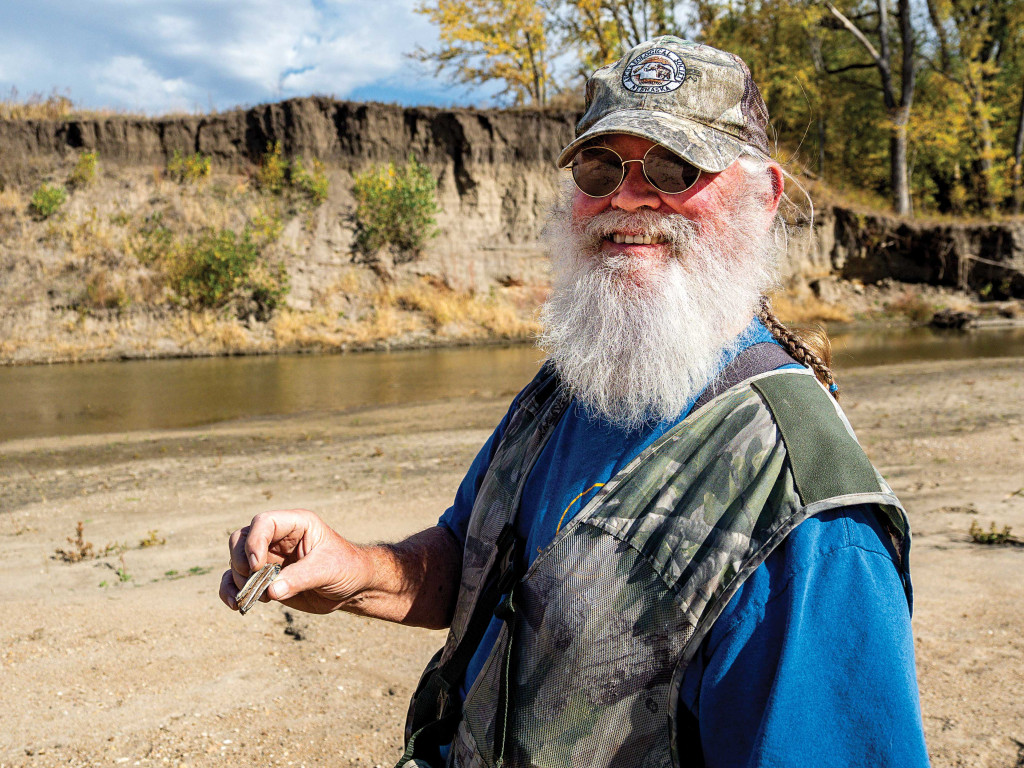
Photo by Renae Blum
Story and photos by Renae Blum
Over 35 years of searching Nebraska for rocks, minerals, fossils and artifacts, Charles Wooldridge’s biggest find wasn’t even his. It was his dog’s.
Wooldridge — who goes by “Wooly” and lives in Lincoln — was in the north-central Sandhills, trying unsuccessfully to relocate an earlier find. And then his dog Hank, a 7-year-old Plott hound, began barking and wouldn’t stop. Hank was standing on a stump sticking out of the creek — later determined to be the largest petrified stump ever found in Nebraska. The 3.73-ton specimen will be on display at Ashfall Fossil Beds State Historical Park starting this spring.
That’s part of the addiction of his hobby, Wooldridge said. Big finds don’t happen all the time, but just often enough to convince rockhounds across the state to spend hours, even days, searching for something special.
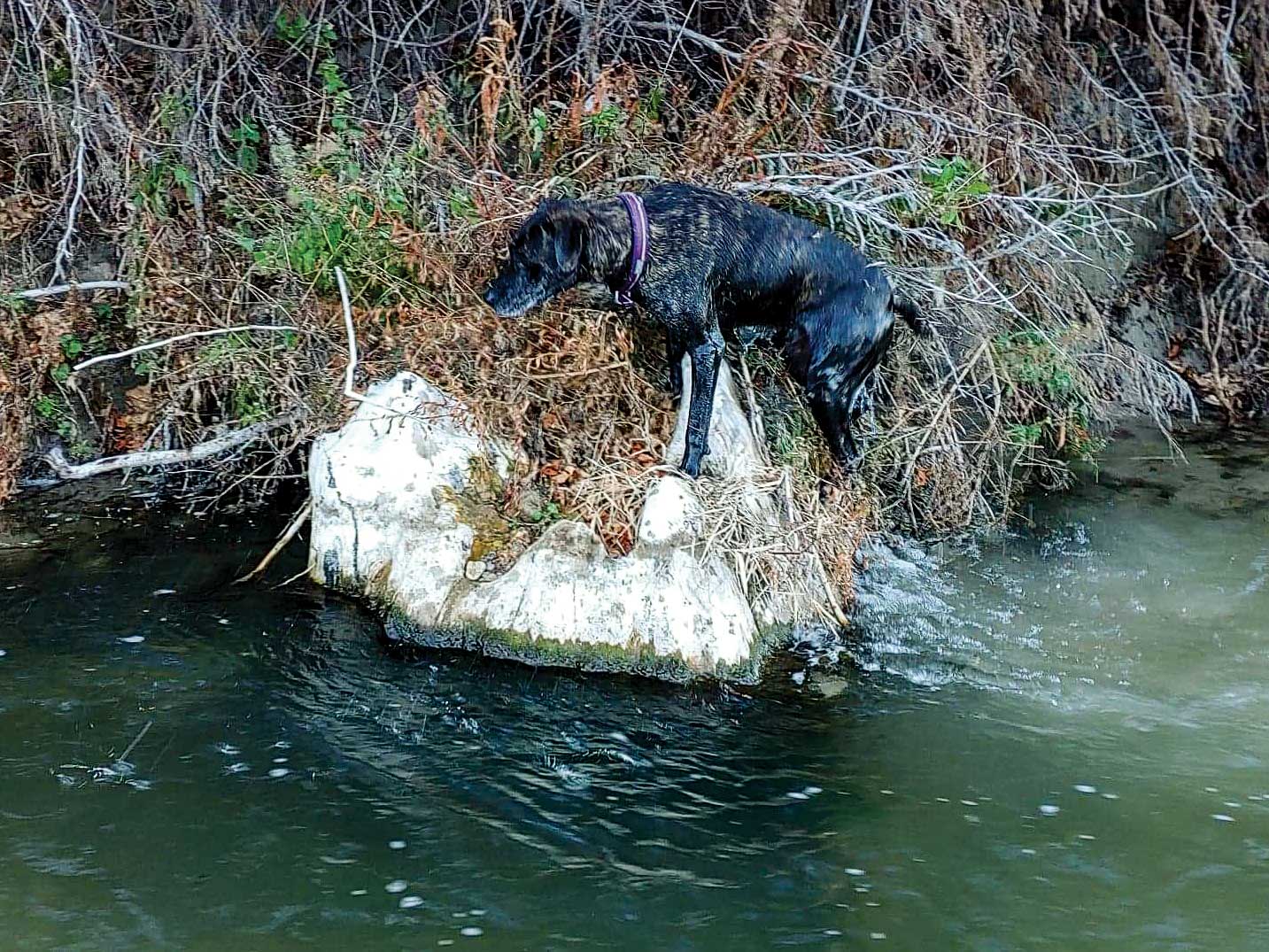
The Pull of Rockhounding
Rockhounding — or the act of searching for rocks, minerals, artifacts and fossils — has many appeals, Wooldridge said. There’s the chance to be out in nature, to enjoy searching for something big, much as anglers, hunters or mushroom hunters do.
Rockhounding also has an element of competition to it. “It’s kind of like fishing,” Wooldridge said. “Fishing is an activity that you do together, but it’s an individual competition. You’re trying to catch the best fish you can; you’re trying to find the most beautiful agate you can.”
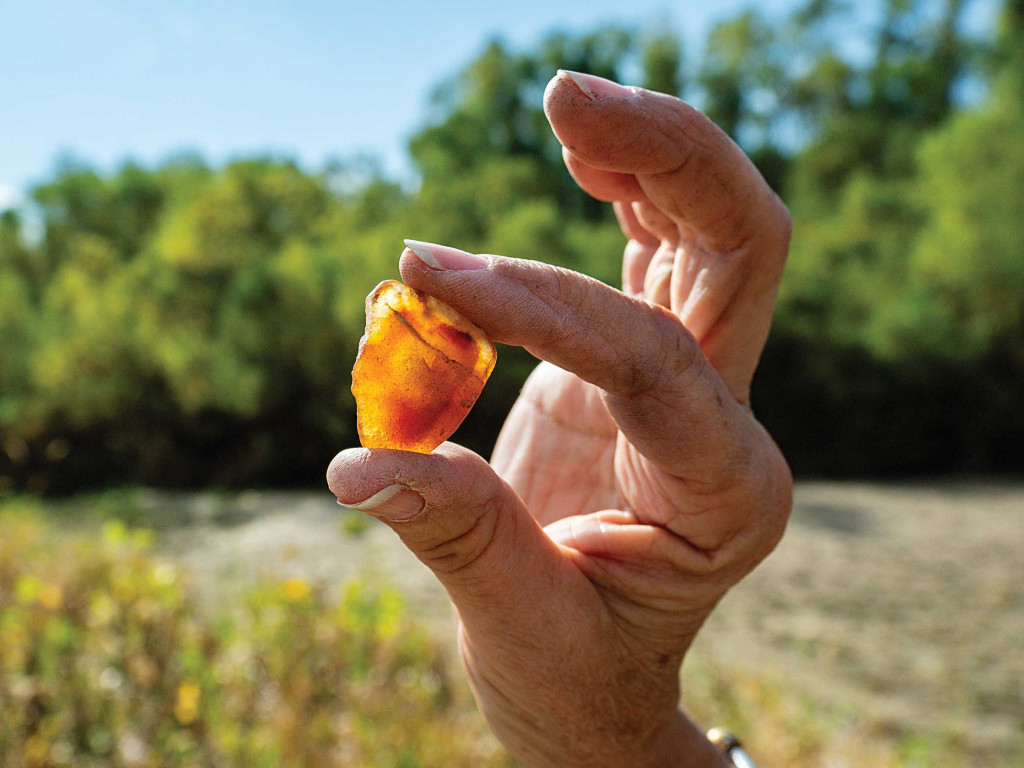
It also has social benefits, making it a great family activity. It’s easier to open up and talk freely while working side-by-side, Wooldridge said.
Rockhounding is also a relatively inexpensive hobby, and one that’s open to all ages. “You can be 8 or 80,” Wooldridge said, adding, “When somebody finds something really neat, everybody shares in that celebration. Everybody’s excited for what was found. So it’s a really cooperative, competitive sport.”
Rockhounding in Nebraska
Wooldridge often hears skepticism about the idea of rockhounding in Nebraska — people doubtful that the state has anything to offer.
“In general, in some places in Nebraska, that’s true,” he said. However, there are plenty of opportunities if you know where to look, he added. There’s petrified wood all over the state, and Nebraska is rich in Ice Age fossils. Rivers and streams are known to be great spots for rockhounding, and Nebraska has nearly 80,000 miles of them.
“Virtually there are things to find everywhere if you know where to look,” Wooldridge said.
Wooldridge spends a lot of time looking for agates, especially Lake Superior agates and Fairburn agates. He also finds petrified wood, jaspers, gypsum, quartz crystals, and various kinds of fossils and artifacts.
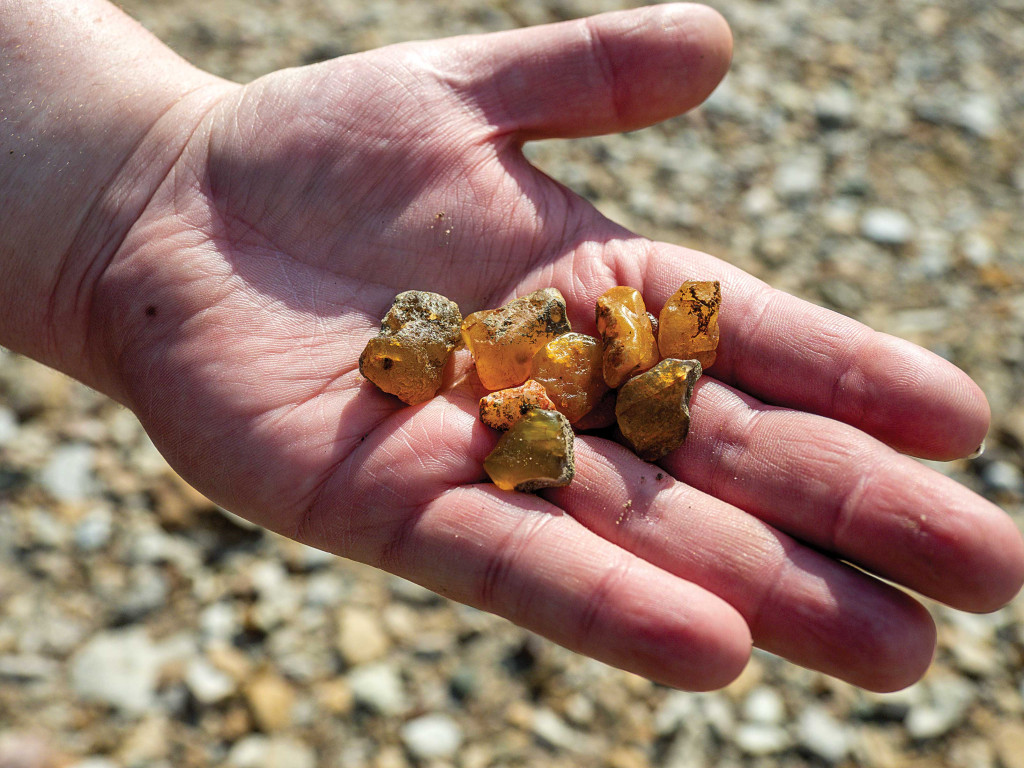
The challenge is that there are very few public lands open for rockhounding in Nebraska. For example, it’s not permitted at Nebraska’s state park areas or wildlife management areas. (See the sidebar below for more details.)
The good news is, many landowners are open to allowing rockhounding on their land, Wooldridge said. He advises looking at county plat maps to find landowners you can contact to ask permission. Respecting private property is an absolute must for rockhounds, Wooldridge said.
With permission in hand, you’re free to search some of Wooldridge’s favorite spots in Nebraska. Among these are the north and south branches of the Big and Little Nemaha rivers, Long Pine Creek and Bone Creek in north-central Nebraska, and the Crawford area in the western part of the state.
Other locations Wooldridge recommends include the Oglala National Grasslands, the Big and Little Blue rivers and their tributaries, and the Platte River and its tributaries.
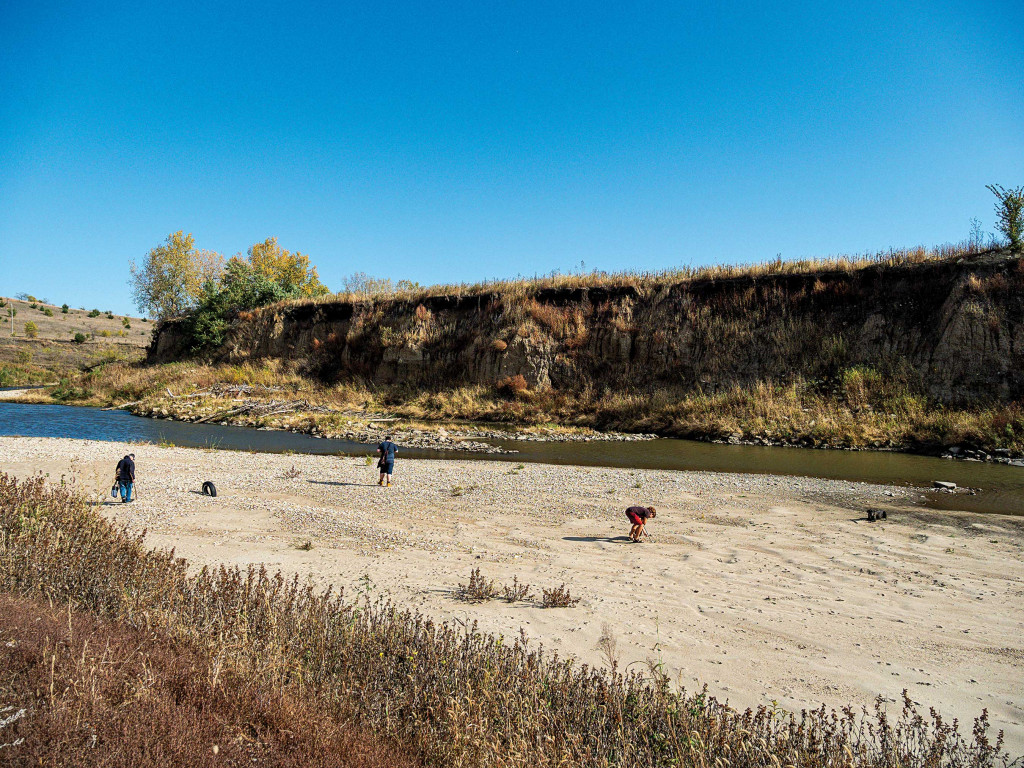
A Rockhound’s Toolkit
For a good day of rockhounding, you’ll need a few things. A walking stick is important; Wooldridge uses a gem scoop for this, a sturdy, long-handled tool that allows him to retrieve rocks without bending over. You’ll also need something to carry your finds. Wooldridge likes a turkey hunting vest since it distributes weight evenly across the shoulders, but a backpack or bag also works.
If you need to chip something out of a host rock, a rock hammer is useful. Look for a purpose-made rock hammer made from tempered steel, like an Estwing. And basics like a broad-brimmed hat, sunglasses, sunscreen and bug spray are good to have.
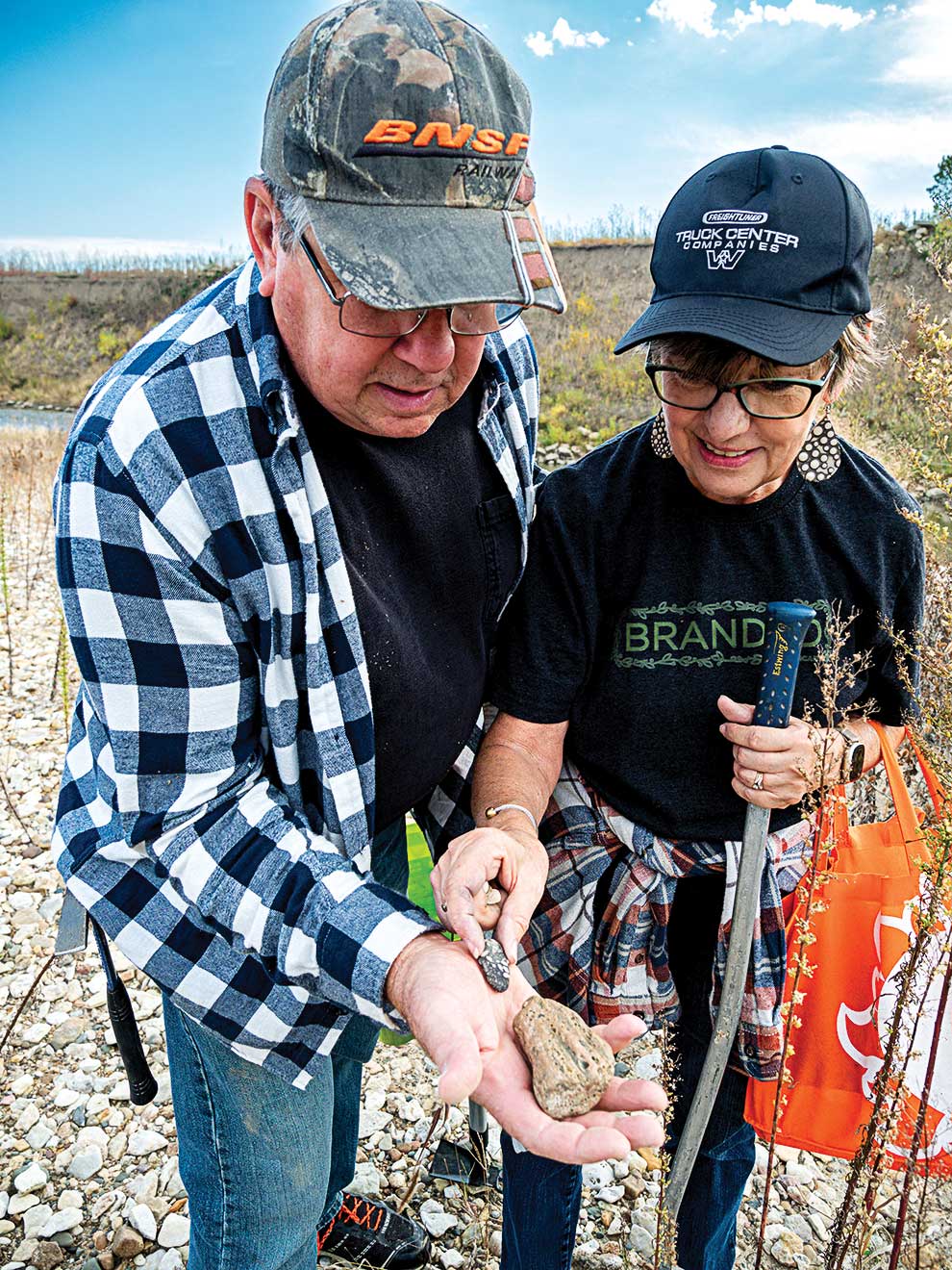
How to Get Started
If you’re interested in trying rockhounding, Wooldridge’s first piece of advice is to join a local club. There, you can learn more about what’s available in your area and potentially go on outings with the group.
Also, “talk to some old-timers,” Wooldridge said. “There are a lot of old-timers throughout the state that still do rockhounding. Find someone to take you out.”
Gem shows and swaps are another good place to start. At these events, you can peruse items for sale and talk to vendors. Gem shows will also have displays of particularly impressive finds.
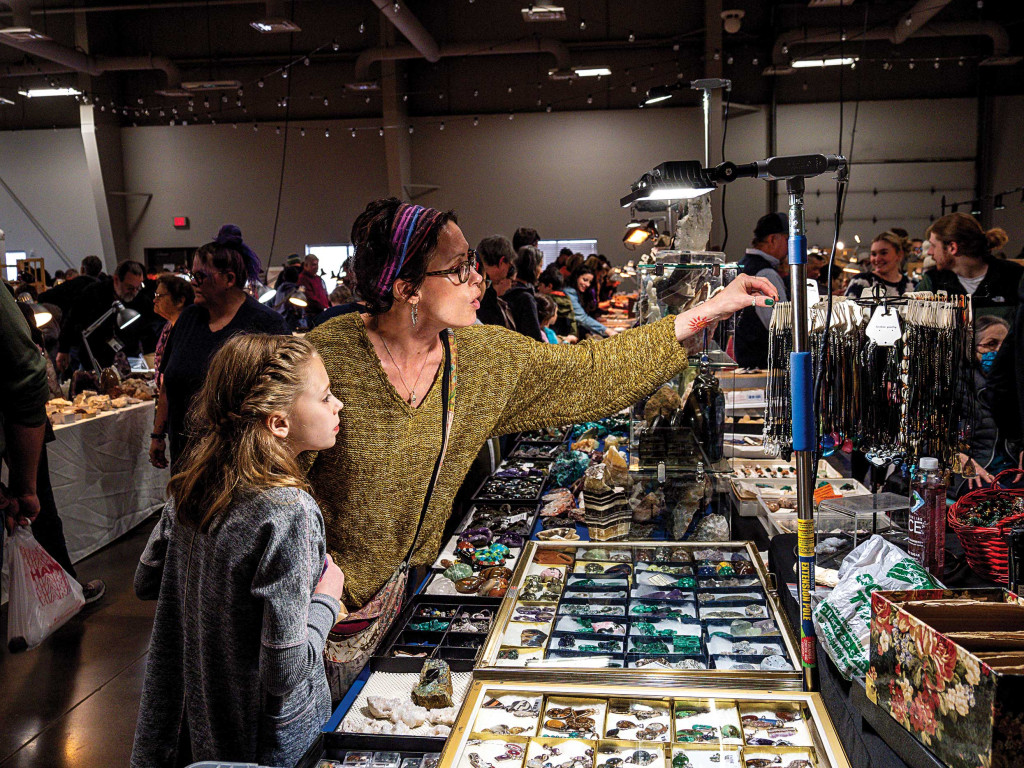
“Lincoln and Omaha have really good gem shows, and there’s also a really neat four-day gem swap in Crawford,” Wooldridge said.
He recommends two books: Minerals and Gemstones of Nebraska: A Handbook for Students and Collectors by Roger K. Pabian and Allan Cook (1976), and Record in Rock: A Handbook of the Invertebrate Fossils of Nebraska by Roger K. Pabian (1970). Both can be downloaded for free from the University of Nebraska-Lincoln’s Digital Commons.
A Day in the Field
On a sunny October day, Wooldridge and fellow members of the Lincoln Gem and Mineral Club spent a day rockhounding along the Big Nemaha River. The group was mostly quiet, carefully picking their way along the gravel bed. Every so often, someone would shout out “Laker!”, signaling that they’d found a Lake Superior agate, and everyone would stop to admire it.
The biggest find of the day belonged to Corey Beer of Lincoln, who spotted a 4,000- to 8,000-year-old knife. “That’s by far the best artifact I’ve ever found,” Beer said. “I’m over-the-top thrilled.”

As the day stretched into late afternoon, people began to pack up for the day — but not Beer. Watching him still busy looking, Wooldridge commented, “When you start finding things, it’s hard to quit.”
It’s all part of the adventure for a rockhound.
Five Finds Worth Keeping
Wondering what to look for? Here are some of the things Wooldridge finds most often.
Lake Superior agates
These beautiful gemstones are highly sought after and were carried here during the last Ice Age, from glaciers originally located north of Lake Superior. They are banded and are typically red and white, but can also be blue, pink, orange or black. Look for them in eastern Nebraska, particularly in the southeast.
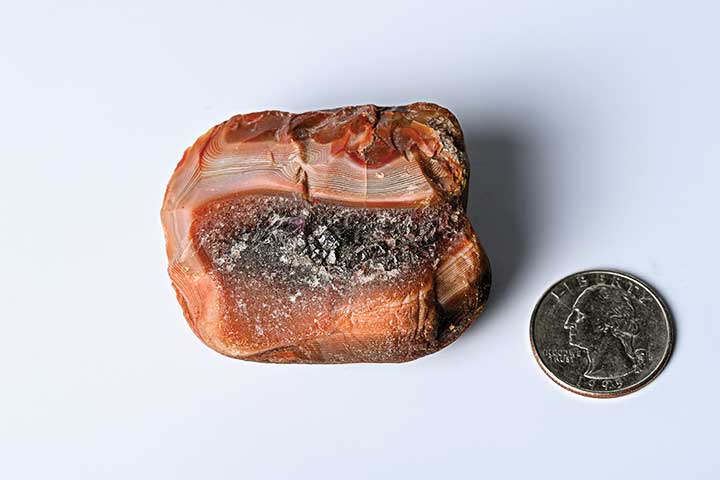
Fairburn agates
The northwestern corner of Nebraska is known for Fairburn agates, which are typically red, yellow, pink and black, and are very colorful. They feature a striped “fortification” pattern resembling holly leaves, and are good for cutting and polishing, as are Lake Superior agates and petrified wood.
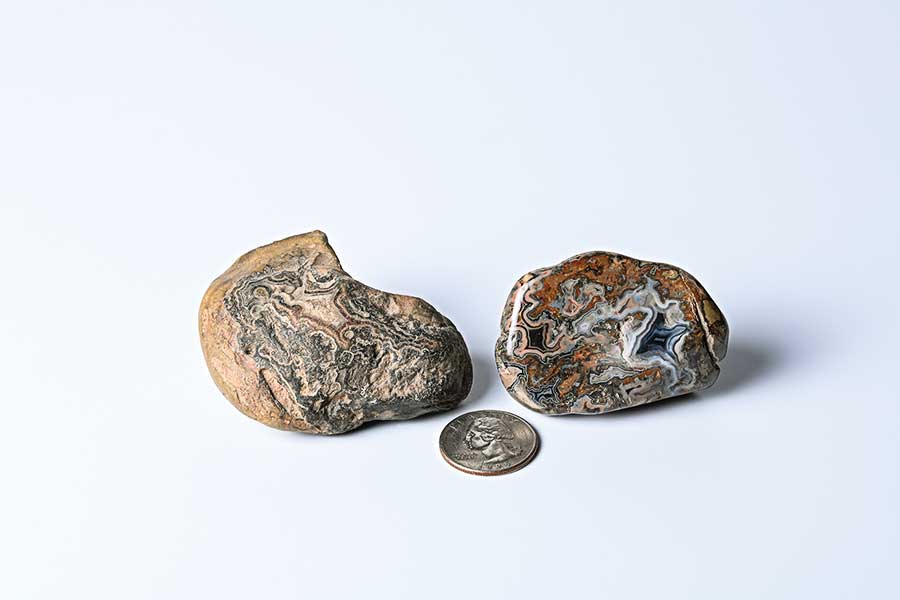
Pleistocene (“Ice Age”) fossils
Fossil teeth and bones from ancient mammals can be found throughout the state. These include ancient bison, horses, camels, elephants and other mammals. These animals lived here during the Pleistocene epoch, from approximately 2.6 million years to 11,000 years ago and were buried by ash, silt, dirt or sand.
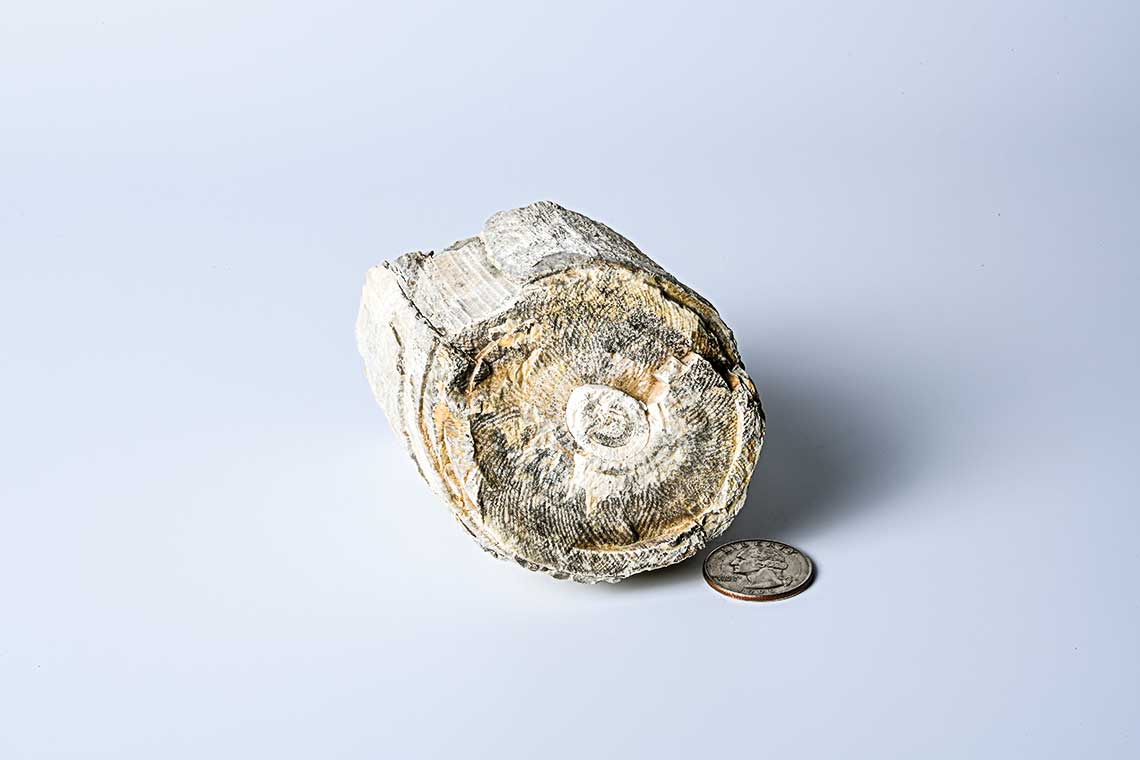
Gypsum
Gypsum, including the variety called selenite, typically appears as clear crystals assuming a range of shapes and sizes. Gypsum is a soft mineral that can be scratched with your thumbnail — that’s the easiest way to tell it apart from other minerals. Wooldridge typically finds gypsum in south-central and southeastern Nebraska.
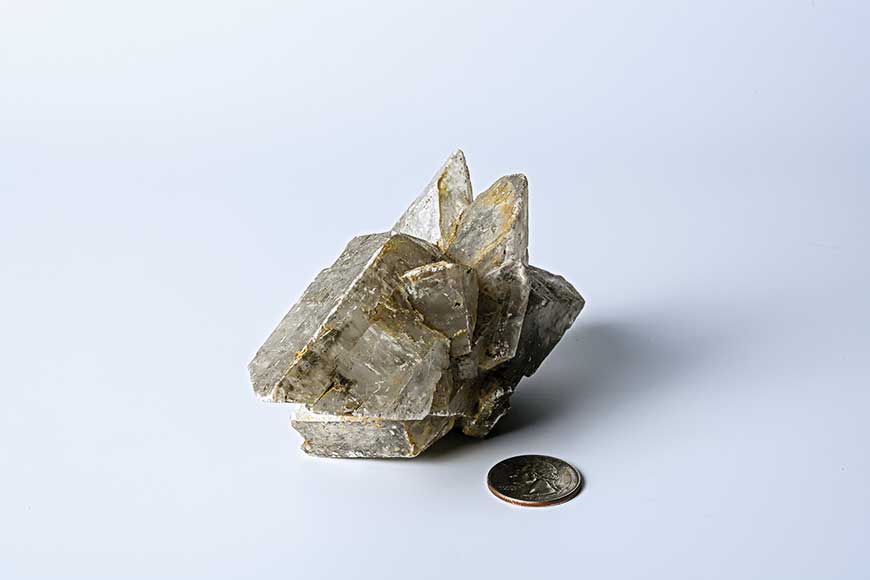
Silicified (“Petrified”) wood
Found across Nebraska, petrified wood ranges in color from black to brown, white, red and yellow, with browns fairly predominant. The original trees fell and were covered by ash, loam, dust, silt or sand. Saturated conditions and the lack of oxygen in buried sediments kept the wood from rotting. Then, silica precipitated from groundwater replaced cell walls and filled void spaces in the wood.
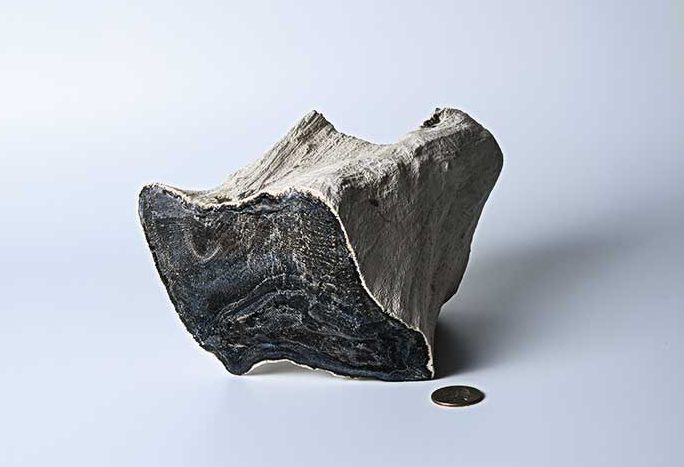
Photos by Eric Fowler. Collection by Charles Wooldridge.
Rockhounding Rules and Regulations
• Respect private property rights and do not trespass. Obtain permission before collecting on any private lands.
• Rockhounds are allowed to collect rocks and agates — but not fossils, artifacts or meteorites — on U.S. Forest Service lands in Nebraska without a permit, for personal, hobby and noncommercial use only. This includes the Nebraska National Forest, the Oglala National Grasslands and Samuel R. McKelvie National Forest. You may remove no more than 25 pounds of rock per day and up to 250 pounds per year. Selling your finds is not allowed, nor is digging. For other uses of rock material, such as landscaping or rock gardening, contact the Nebraska National Forests and Grasslands Supervisor’s Office at
308-432-0300, as a permit may be required.
• Rockhounding also is allowed on the 5,100 acres in Nebraska managed by the Bureau of Land Management. Noncommercial collection of rocks, petrified wood, and common invertebrate and plant fossils is allowed, but you may not collect artifacts or vertebrate fossils. Only gather invertebrate fossils and plant fossils not of scientific interest in reasonable amounts for personal use. You can also collect up to 25 pounds of petrified wood per day, not to exceed 250 pounds per year.
While rockhounding is legal on BLM lands in Nebraska, it’s important to point out the public may not always have access to these lands. BLM-managed lands in Nebraska consist of small, isolated parcels scattered across the state and legal access to them is extremely limited, as they are typically surrounded by private land with no public roads, trails or adjoining lands to reach them. It’s up to you to know where you are — use maps, GPS or a landownership app to avoid trespassing. You can find a map of Nebraska’s BLM properties at blm.gov/maps.
• Collecting materials is not allowed at Nebraska’s state park areas or wildlife management areas. It is also not permitted at national wildlife refuges or lands managed by the National Park Service, including national monuments.
• Not sure if rockhounding is permitted at a particular site? It’s your job to know; always do your research first and ask permission if needed.
• Mine Safety and Health Administration regulations make access to private pits, quarries and mines unlikely or impossible.
The post Unearthing Treasures – Rockhounding in Nebraska appeared first on Nebraskaland Magazine.
















